This is a re-post from two years ago because I’ve spent the last week in the valleys & mountains of Northern New Mexico, and everyone knows it takes at least one more week to recover from a vacation with a child. But also, I can never go to Taos without thinking of Millicent, so it’s also on trend.

The name Millicent Rogers was vaguely familiar when I first stepped into the Millicent Rogers Museum in Taos back in 2012. She came up periodically in my coursework when I studied at London College of Fashion and floated in the periphery of other research I had done over the years. But for some reason, she had always passed me by -- as I walked the exhibition rooms of her namesake museum, founded around her thoughtfully curated collections of Native American pottery, textiles, and jewelry, I wondered how I could have ever missed her.
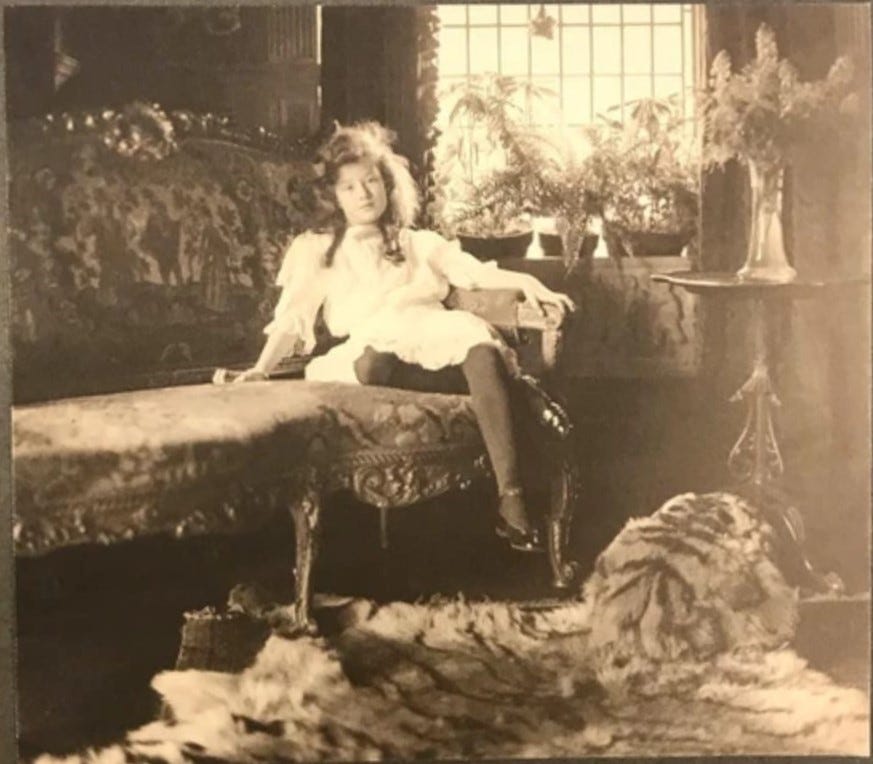
Born a Standard Oil heiress in New York City, she had a terrifying bout of rheumatic fever at the age of eight, leaving her with lingering ill health. Doctors said she wouldn’t live past 10, but she went on to live a full life before finally succumbing to complications of her illness at the age of fifty. Her grandfather was one of the fabled “robber barons” of the late nineteenth century and her early life was all opulence and privilege. She had her debut in 1919 at The Ritz Carlton -- 1300 people attended and it was said to have rivaled the ball the Vanderbilts threw the next year to welcome the Prince of Wales, who was coincidentally a great admirer. She blazed through the Jazz Age style pages, her every move documented with increasing fervor, marrying a penniless Count and having a grand old time across Europe until her father convinced her to get a divorce.
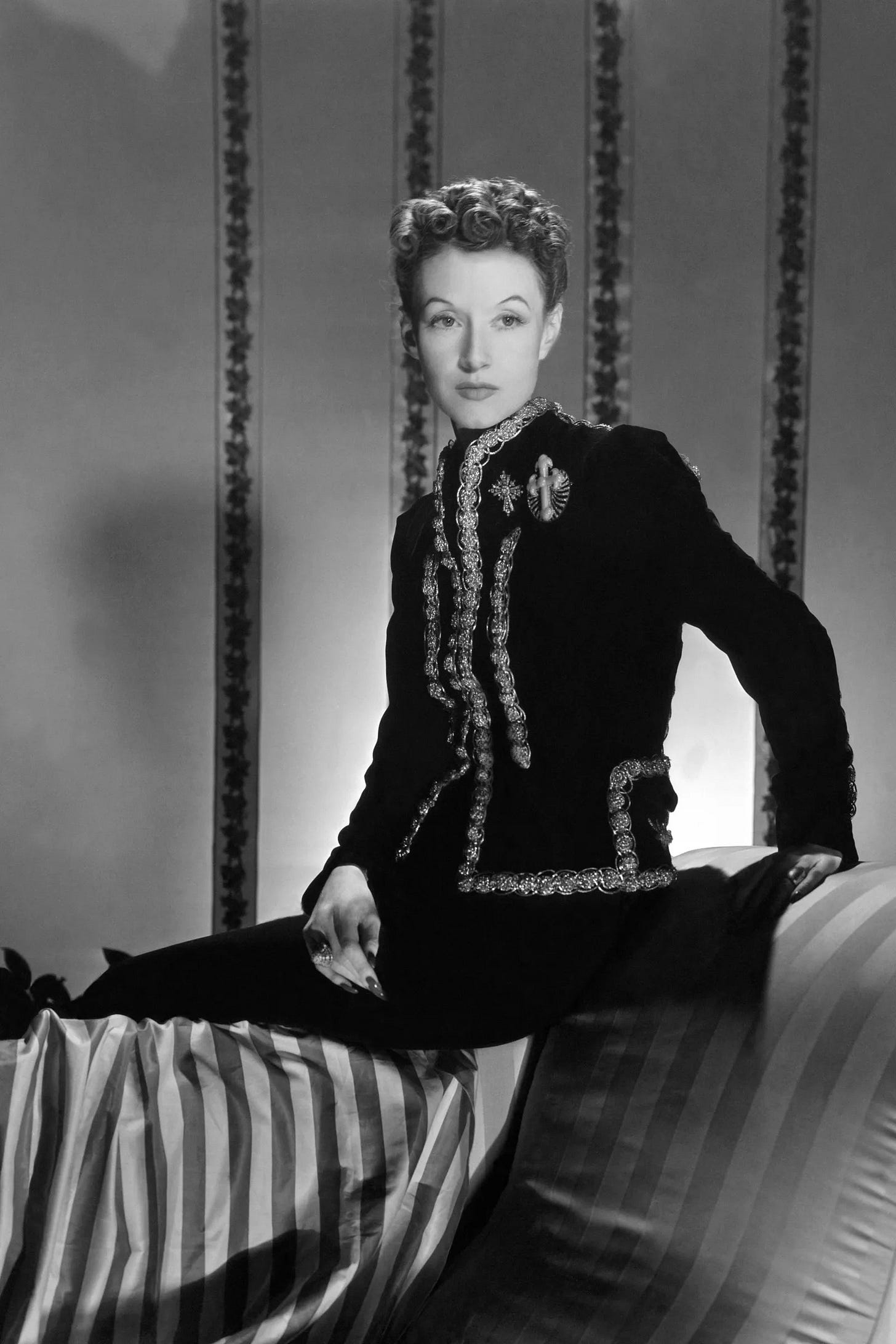
Several more marriages and a handful of children followed, but Millicent devoted herself to living a full life, surrounded by as much beauty as she could get her hands on. She had to have known that her lingering health concerns meant that her life could well be a short one, and she threw herself into living with as much passion as she possibly could. She is continuously described by those who knew her as someone determined to live her life dedicated to the pursuit of pleasure, intent on wringing every last drop from her experiences.
She had learned at a young age that her purpose in life was to spend money on beautiful things -- not in a covetous way, but as a means of preserving beauty. She had always possessed a creative spirit, seeking out the most unique art, fashion, and jewelry pieces. Possibly because of her ill health, she never wasted time worrying about following trends or the style dictations of the rarified social circles she inhabited. Instead, she cultivated confidence in her own personal taste and style. She was an early patron of Elsa Schiaparelli, who became a friend, and a prolific buyer of Charles James couture. She was extremely hands-on when purchasing from her favorite designers, commissioning customized creations that showcased her own personal style while retaining the couture quality of the design houses she patronized. The fashion collection of the Met, especially much of their Schiaparelli and James collections, is much richer because of her large donations of clothing, accessories, and jewelry. She had a knack for sniffing out the most innovative pieces and used her vast inheritance to support and elevate artisans across Europe and America.
Her life had centered around New York and a Tyrolean hideaway in Austria until WWII forced her hand. Before fleeing Europe, she managed to bribe Swiss officials to allow several Jewish friends to escape the advance of the Nazis, and once home in the USA, she threw herself into war work. As the war went on and stories of the horrors happening in Europe filtered across the ocean, she began to set her eyes on a life far removed from her gilded existence. After an ill-fated romance with Clark Gable, she was ready for a change.

She was invited to Taos, New Mexico by Mabel Dodge Luhan in 1947, and the visit changed the trajectory of her life. She fell in love with Taos and the ancient Taos Pueblo. The cobalt blue skies and glowing umber of the pueblo architecture had drawn creatives and artists for decades, and Millicent was the latest in a string of aesthetes who made their way to the southwest. She purchased a crumbling hacienda, naming it Turtle Walk, and set about creating a life of beauty and creativity in the only way she knew how -- by seeking out artists to patronize and purchase from.
Her collections of Native American art allowed her to meet numerous artisans and characters across the American South West. She often collaborated with makers, customizing pieces to suit her tastes. But she was a supporter of the traditional craftsmanship and quality of the artisans she met in Taos and became a proponent of the Taos Pueblo and other historic communities across the region, traveling to Washington DC with several celebrity friends to lobby for Native American civil rights. It was through her direct involvement that Native American art became designated as “historical,” allowing for conservation and preservation efforts at the national level.
One of the things that I love about Millicent is the way she was inspired by her environment -- in Austria, where she owned a home and spent much of her adult life, she was inspired by the folk costumes and commissioned beautifully crafted dirndls and embroidered wool knitwear, furnishing her home with locally made furniture and antiques. In New Mexico, she fell in love with Native American craftsmanship in both silver and textiles and began outfitting herself in exquisitely made creations. Turtle Walk became a cozy collector’s haven of Navajo rugs, Pueblo pottery, and beautiful folk art. I recognize this habit of deep-diving into whatever current obsession had taken hold -- it’s how I live my own life, moving from inspiration to inspiration, never done with learning and admiring and collecting.
Millicent died just before her fifty-first birthday in 1953, leaving behind a vast collection of art and fashion objects that would go on to become major contributions to important museum collections. Her life’s work had always been to search for and preserve beautiful objects, and her legacy lives on in public collections across the nation. Her vibrant and innovative personal style, much-lauded and talked about during her life, continues to inspire designers and artists and lands her on numerous “Best Dressed Women of All Time” type lists. But I think her most important legacy is the relationships she fostered with artists and creatives, using her immense privilege to support and encourage the creation of beauty.
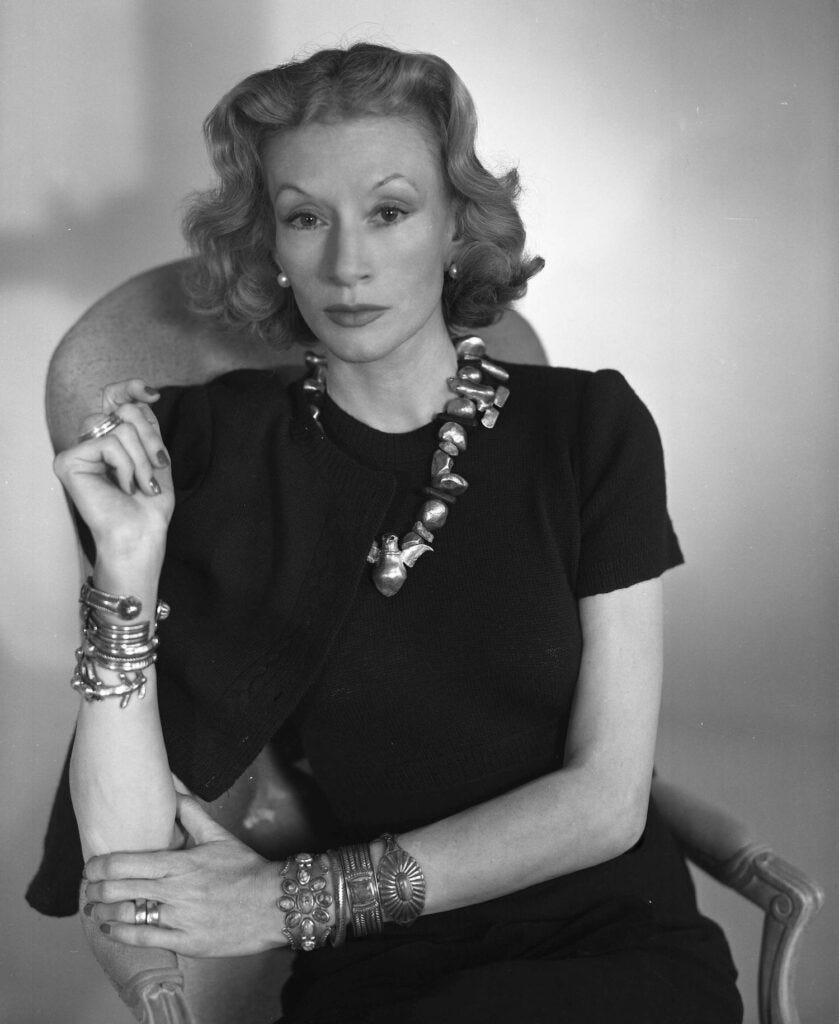
While trawling The Met collections for pieces donated by Millicent Rogers, I came across their holdings of Charles James muslins. James asked three of his most devoted clients — Millicent Rogers, Dominique de Menil, and Austine Hearst — to donate both completed garments as well as the supporting materials, such as patterns and muslins, to the collection.
There is something starkly beautiful and surreal about the muslins — often half-pieces of the complete designs, simple in their beauty but showcasing incredible technical couture skills. They are sculptural works of art in themselves.
You can view the rest of the collection here.
A letter from Millicent Rogers to her son, Paul Peralta-Ramos, written towards the end of her life:
Darling Paulie,
Did I ever tell you about the feeling I had a little while ago? Suddenly passing Taos Mountain I felt that I was part of the Earth, so that I felt the Sun on my Surface and the rain. I felt the Stars and the growth of the Moon, under me, rivers ran. … Being part of the Earth one was never alone. And all fear went out of me—with a great, good stillness and strength.
If anything should happen to me now, ever, just remember all this. I want to be buried in Taos with the wide sky– Life has been marvelous, all the experiences good and bad I have enjoyed, even pain and illness because out of it so many things were discovered.
Life is absolutely beautiful if one will disassociate oneself from noise and talk and live it according to one’s inner light. Don’t fool yourself more than you can help. Do what you want—do what you want knowingly. Anger is a curtain that people pull down over life so that they only see through it dimly—missing all the savor, the instincts—the delight—they feel safe only when they can down someone. And if one does that they end by being to many, more than one person, and life is dimmed—blotted and blurred!—I’ve had a most lovely life to myself—I’ve enjoyed it as thoroughly as it could be enjoyed. And when my time comes, no one is to feel that I have lost anything of it—or be too sorry—I’ve been in all of you—and will go on Being. So remember it peacefully—take all the good things that your life put there in your eyes—and they, your family, children, will see through your eyes. My love to all of you.
This article says all I want to say about children’s literature, and how absolutely boring & saccharine it has become in recent years. As a former school librarian, I spent a lot of time hunting for books that kids actually want to read and it gets more and more difficult as we continue to sanitize & control what we think kids can “handle.”
Super inspired by this resourceful & community-oriented flower farmer and her business model!
AHP does it again with a deeper dive into the research and writing that inspired this viral article. It’s everything so many of us have been saying about the current state of home trends and “design,” with more smarts:
How do you make your home entirely your own — a reflection of your good taste! — while also making it wholly acceptable to the market-reflected gaze? The only solution is to make the market-inflected taste your taste. And that experience can be incredibly alienating, particularly when you convince yourself that you’re doing a remodel that you’re going to love, spend a ton of time and energy on it, and then look around and think meh. Sure, your bathroom looks “nice.” But that’s because it looks like the bathroom at the Hilton, fulfilling a very specific, very bland, and very bourgeois understanding of what “nice” looks and feels like. As a result, many homeowners experience a feeling of what Grant and Handelman call “dysplacement” in their own homes. They’re unhappy when they haven’t remodeled, and they’re still unhappy after they do.
I have always loved hollyhocks — from English cottage gardens and adobe walled plots in Taos — and now that I live somewhere where we can grow them, I’ve been obsessively learning in preparation for next year. The history of the flower is also fascinating, and the way they have been popular with children’s book illustrators makes me love them even more.


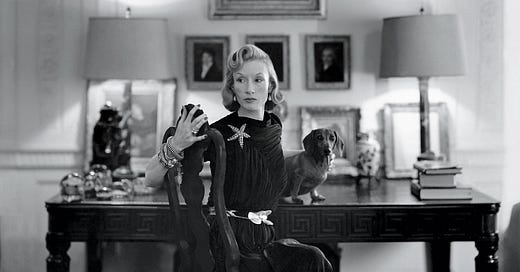

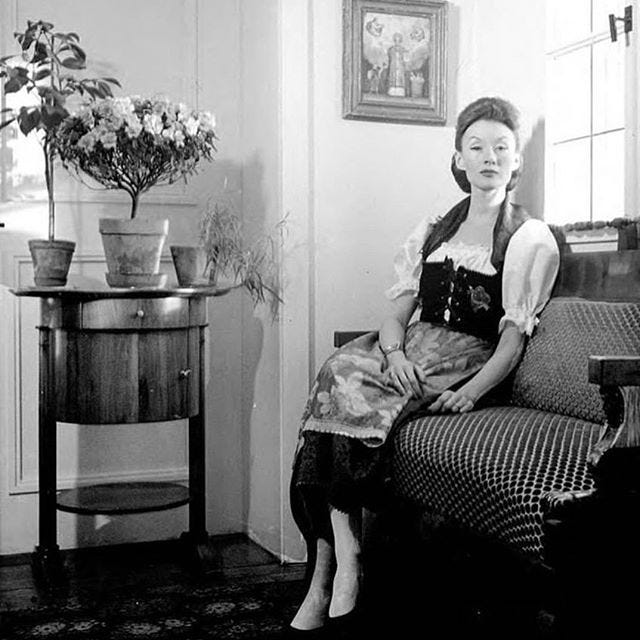

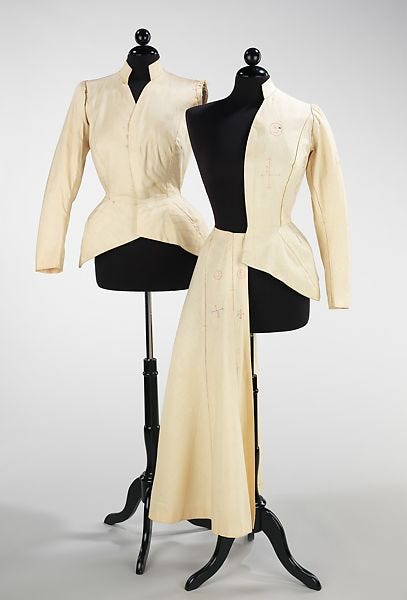
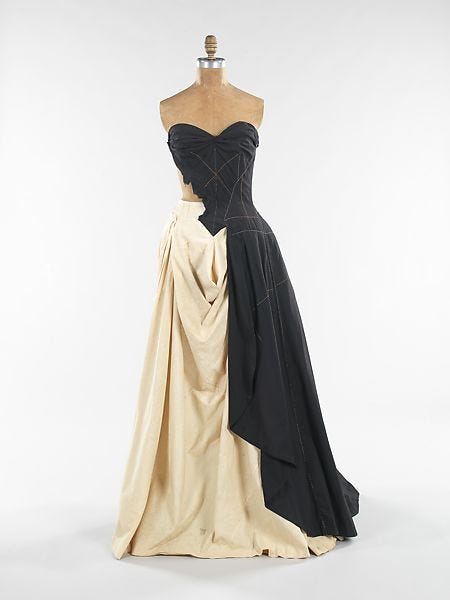
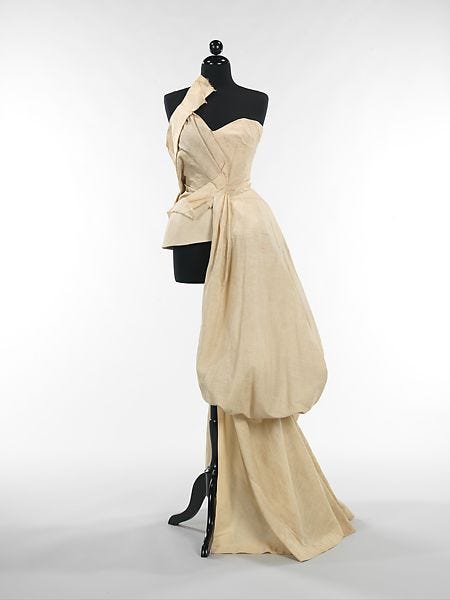


What a life! And a great read, as always. The images are wonderful - those muslins!
Loved this article. Millicent's letter to Paul was beautifully written and incredibly moving. It's one of those letters I want to share with everyone I know. Thank you for introducing me to her.